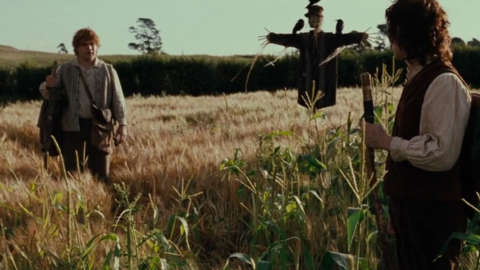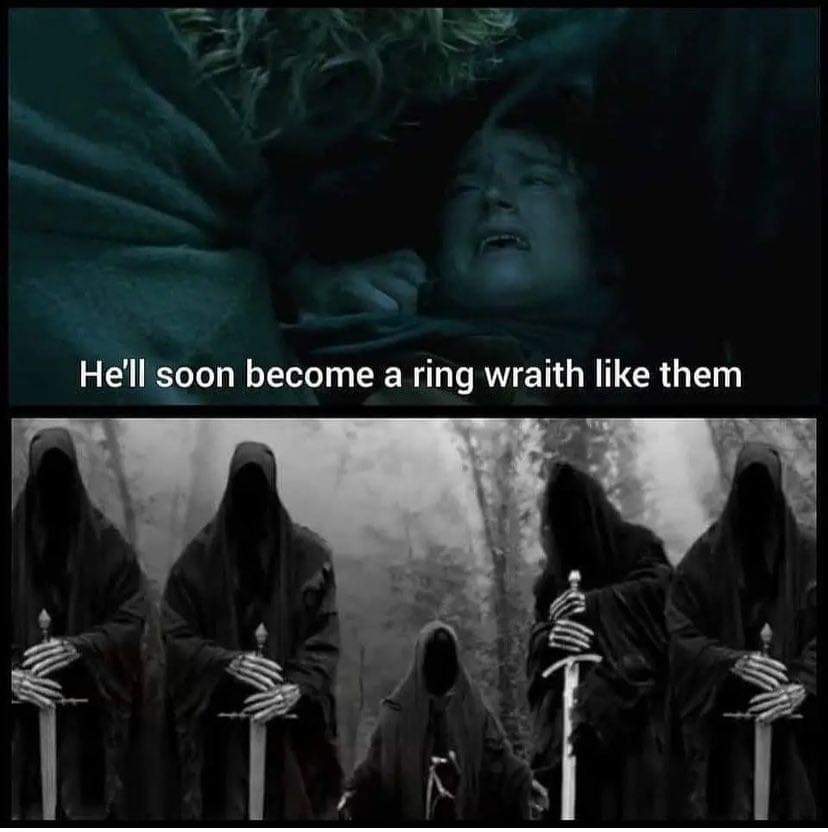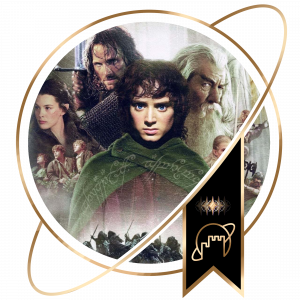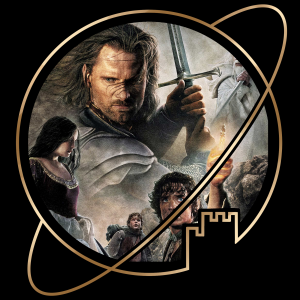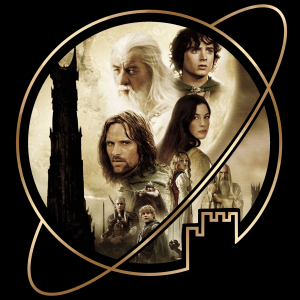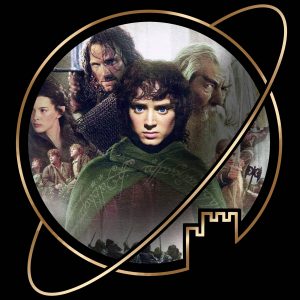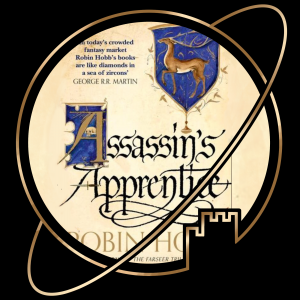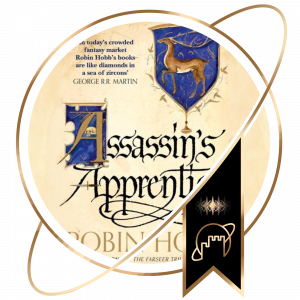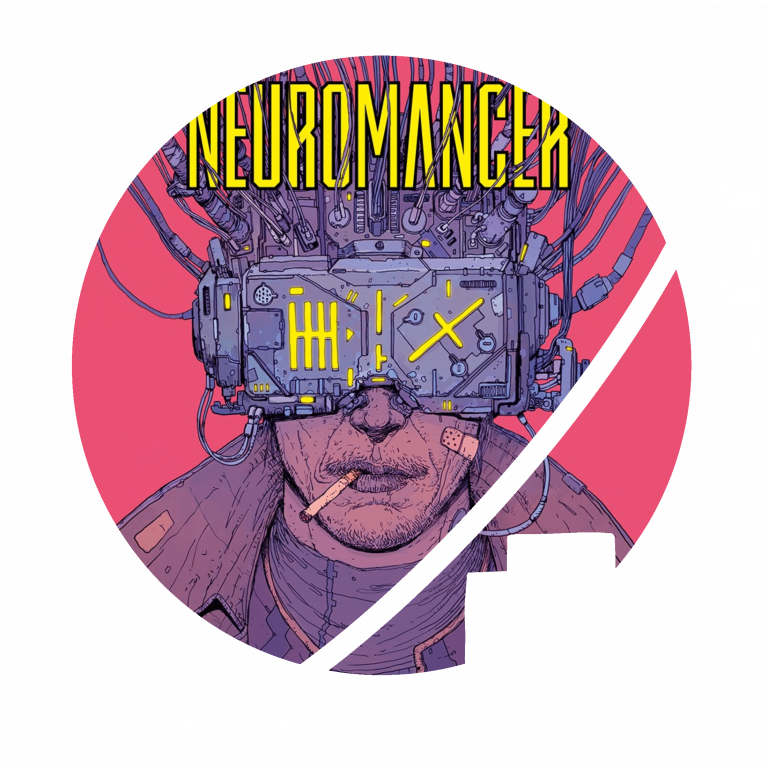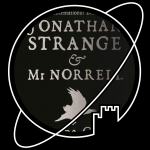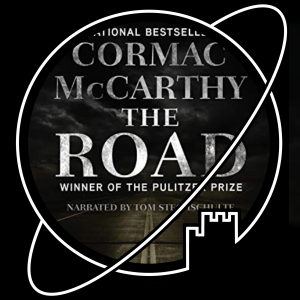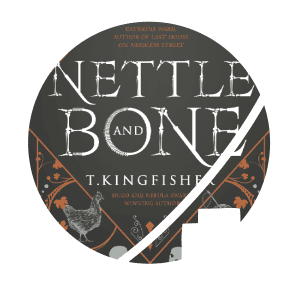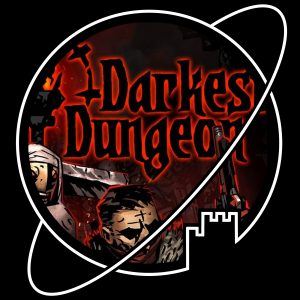A curated Collection of Fantasy and Science Fiction Media
Recent Updates
- Movie directed by James Cameron
- Starring Sam Worthington, Zoe Saldana, Steven Lang, Sigourney Weaver, Kate Winslet and others
- Released December 2022
- Runtime: 192 minutes
- Part two in the Avatar series
Inevitably, the Sky People return to Pandora after the events of Avatar. Jake Sully, the human marine gone native who became Toruk Makto, the great war leader, organises the native Na’vi resistance – but he can’t prevent the humans from gaining a foothold. When he finds out an old enemy has returned, and the humans are specifically targeting him and the family he has built in their absence, he is faced with another choice. Jake decides that the best way to protect his family and the clan that adopted him is to move far away, to where the human’s can’t find them. Or can they?

We went to see Avatar II: The Way of Water in cinema having just re-watched the first instalment. We knew what to expect: visual spectacle over a paper-thin story, some cool worldbuilding and utterly forgettable characters. We knew where the bar was set. Unfortunately, Avatar II still managed to disappoint.
Avatar II does deliver on the visual spectacle. The CGI is amazing (markedly improved from 2009), and the art department outdid itself with beautiful designs on both the (sea) creatures of Pandora and the human (naval) technology. As with Avatar, Avatar II has breathtaking establishing shots of the jungles, floating mountains, and oceans of Pandora. Especially the first half of the runtime at times feels like a nature documentary – all that is missing is David Attenborough narrating the behaviour of the Pandoran wildlife. And I mean that in a positive sense – I actually think the moments introducing the marine ecosystem of Pandora are the movie’s high point. I would probably have preferred that imagined Attenborough documentary over the movie we got.
Where Avatar could still be saved by its originality, this time we know what to expect when we sit down. The sense of wonder is gone. The second instalment needs to go beyond to achieve the same result as the first movie – and instead, it feels like we got a really similar (worse?) movie. Because where the story and characters of Avatar were thin but functional, the plot and characters of The Way of Water are just plain bad – there’s no sugarcoating it. Utterly predictable, jarring in juxtaposition and horribly paced, Avatar II at times was a chore to sit through, even in cinema.
I feel like this movie’s script writers were asleep at the wheel. For some reason, Avatar II combines a ‘settling into a new community’-type plotline with kids getting into petty fights and bullying one another (such as would be fit for pre-teens) on the one hand with a brutal, gruelling, hour-long fight at the end on the other. If I’m not mistaken, some of Jake’s kids get captured and are freed no less than four times over the movie – leading to multiple deja vus, and in my case, eyerolls.
There is no catharsis at the end, because this movie drips the need to set up an Avatar-cinematic universe, so literally no plotlines are resolved whatsoever, and the world – and characters – are in exactly the same place before the movie as they are after. Whatever part three will be, I am sure we could have fit the events of this movie into a ten-minute montage at the start of it.
So, why still 2 stars? That seems pretty high for an over-three-hour-watch with a plot this bad. Well, the first thing I would say is, don’t shell out 15 bucks to go see it in cinema – it’s not worth it and I think we shouldn’t encourage this kind of filmmaking.
On the other hand, I think the movie probably does what it intends to do: it delivers a string of mindless action sequences that look amazing, glued together by a semblance of a plot that nobody is expected to care about. And it is really good at that! I am convinced there is an audience for this. Surprisingly, it’s just not me. I can usually stomach a movie with a lot of emphasis on the action, but in Avatar II: The Way of Water, the balance has tipped in the favour of pretty pictures and violence a bit too much.

In a way it doesn’t really feel fair to review this movie, because I pretty much knew going in that it wouldn’t be my kind of thing. While watching the first Avatar movie I fell asleep right as the action started, which should tell you something about my level of investment.
Let’s start with the positive: the underwater scenes were quite breath-taking. Especially on the big cinema screen they completely mesmerized me. If the movie would have been 3,5 hours of just beautiful shots of fishlike creatures floating by, I think I would have given this movie 5 stars.
Unfortunately, I suspect that the makers did not consider this an adequate recipe for a major box office succes, and so they had to slap a thin layer of clichés over it that is meant to pass as plot. Not to mention a lot of shooting and explosions.
Of course this was what I expected, but on top of this the movie was also quite sad and did not really come to a satisfying resolution. Which meant that I didn’t even get to feel good when the bad guys were defeated.
All in all, I did not have a terrible time, but it could definitely have been better. Which is what I would have predicted when I went to see the movie, so who’s fault is it really?

Beautiful visuals, weak story. That would be my brief judgment of this movie. More or less the same opinion as my fellow curators. Still, I’ll try to elaborate a little.
One of my beefs with this movie would be the atrocious pacing. Usually, I have quite a admirable attention span – if I might say so myself – but I couldn’t bring myself to watch the entire movie in one go. After two hours, arguably the point at which the climax is somewhat beginning, I paused the movie to save the rest for later.
Another thing I didn’t really like? Well, that would be the fact that this movie follows Jake Sully again. Not only that, other characters from the first movie also get te reappear, even when they had no real business to do so (yes, I’m talking at you, antagonist). Familiar faces can be joy in stories, but only when they contribute something. Otherwise they can severely weaken a narrative, also retroactively.
Jake Sully wasn’t a very compelling character to begin with. A run-of-the-mill white male “chosen one” who saved the planet and became a leader of the culture he initially colonized. It was not an original story, but at least it came to an ending you might expect. However, The Way of the Water wipes the slate clean, effectively making all Jake’s achievements in the first movie meaningless. And why? So we can be introduced to another part of the Avatar universe, again saddled with Jake’s boringness. But that’s still not enough. Neytiri’s character also needs to be dragged along, getting forced to leave the home and people she is a leader of. And she hardly objected?
Honestly, I think this story would have had more potential if the writers had dared to distance themselves from the protagonists of the first movie. Usually, I have a weak spot for stories that focus on the legacy and descendants of familiar characters, but in this case it had little value. Any family could have fled the humans (by the way, aren’t we the worst?) and wound up at a different culture, forced to learn new ways and assimilate. We didn’t need Jake for this. Alas, it seems we’ll be stuck with him for the forseeable future of this franchise…
Tuk was cute, though. I loved watching her bounce around. And Payakan deserves an award.
Tagged:
Time to get to know the Escape Velocity Collection’s curators! How? By asking them the questions that really matter! Let’s see what our curators have to say…
This week’s question is:
What is your favourite The Lord of the Rings-meme?
Though perhaps not as eminently memeable as the Star Wars prequel trilogy, Peter Jackson’s The Lord of the Rings Trilogy is still prime meme material. However, Sturgeon’s Law applies to memes as much as to anything else (if not more!) As Robin put it, the internet is where the Infinite Monkey Theorem meets comedy, and the result is a heap of thousands of thrash-tier memes with some gems hidden inside. We’re here to show you some of the gems – so I asked the curators to share their favourite Middel-Earth meme. And of course, I’ll go first.
Théoden is probably my favourite character in the movies – I know Jackson’s portrayal differs from the books, but I like him all the more for his flaws. And meme-ing this powerful moment of his near the climax of The Two Towers, well…

(I’ve sadly not been able to find an original source, for it appears either multiple people had the same idea, or perhaps some folks reposted without crediting…)
A close second is this great little edit of the precise moment Aragorn blanked on Thranduil’s name:
I had to dig a little to uncover my answer to this curator question. Though internet occasionally throws an amusing LOTR meme my way, it typically leaves my brain immediately thereafter. The few memes I have saved on my PC (and find way too funny) relate to Théoden or Denethor and their dead sons (and sometimes including a cruel jape towards Faramir). For example (credit):

Yeah, I should probably talk to someone…
My favourite LOTR meme, however, is a lot less grim, and a lot more stupid. The first time I saw it, early in the morning, it hit me so hard, that I almost woke up Jasmijn with my giggling. Why do I find this meme so funny? Because it hits very close to home, and its format is very reusable (credit):

I always appreciate it when people exert themselves beyond all reason to ‘commit to the bit’, and one of the most beautiful examples I have ever seen of this is this LOTR edit.
I would not want be the editor on this one, but just the fact that someone went to the effort just for this joke makes me very happy.
This one. (credit)
That’s it: another soul-searching question answered!
Still curious? Visit each curator’s page to see what they’ve recently been up to!
Check out our reviews of the media discussed in this post here:
- Novel written by Robin Hobb
- Published 12 August 2014
- Part one of the Fitz and the Fool trilogy
Fitz is slowly adapting to his new life at Withywoods, far away from courtly politics and his former life as an assassin. However, he still struggles to let go of old friends and the echoes of his past. When his wife Molly comes with a surprise announcement and a mysterious messenger appears, it becomes clear his former life still haunts him in more ways than he knows…
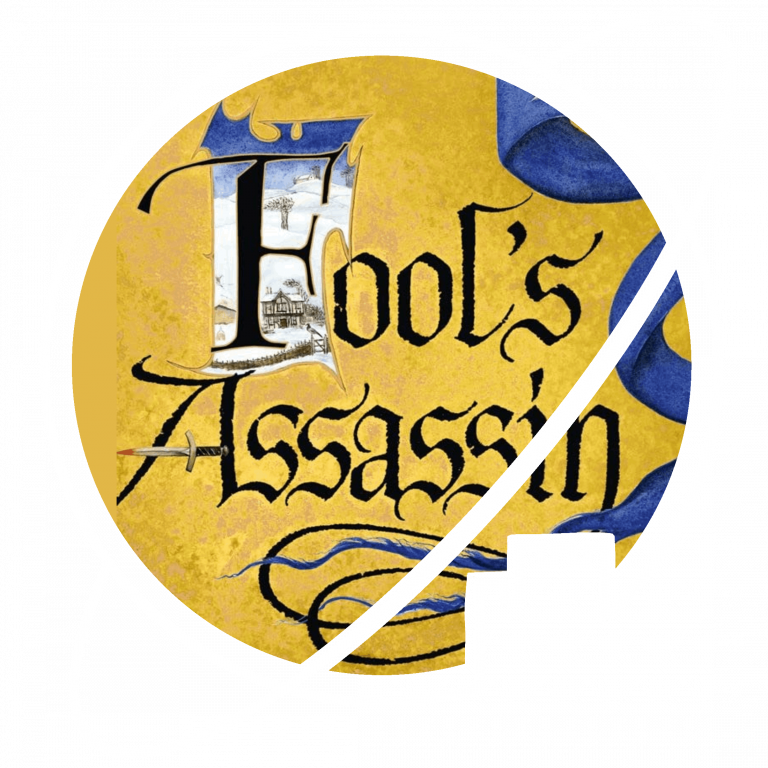

It’s been a good while since my last Robin Hobb book. I finished Blood of Dragons around two years ago. Since then, I’ve found book 2 and 3 of the Fitz and the Fool trilogy in thrift stores. They’re really nice, too. Both are those fancy hardcovers that I would never buy new. Unfortunately, I just couldn’t find part one, Fool’s Assassin, in the same edition. After my fortune finding the first two books, I figured the first installment of the series would also eventually just… fall into my lap. It didn’t. I ended up asking for the paperback version as a birthday gift from my work. At least this way I could finish the series, even though it meant I wouldn’t have the full set for my bookshelf. It’s fine. I’m fine and cool with that.
After the last trilogy, Fool’s Assassin was an absolute breath of fresh air. Or perhaps not fresh, but certainly good, decent, quality air. I wasn’t a huge fan of the characters in the Rain Wild Chronicles, and I have to admit I have my issues with the cast of Fitz and the Fool as well. However, it’s much more of an “Oh, you” kind of feeling than the annoyance I felt at Thymara and co. Fitz is a little bit dumb but we love him and he’s been through a lot so we’ll let it slide. Molly has never been my favourite but she’s a character stuck in a story she never wanted to be in, so like, I get it. More characters get introduced, whom I won’t say too much about except to say that one of them is frustrating in much the same way as Fitz, but there are also side characters I’ve grown extremely fond of, like Riddle.
There are a couple of fun twists in this book. A lot of it I saw coming because literally anyone reading this book is smarter than Fitz, but there were also a couple of twists that surprised me and left me very intrigued as to where the story is going.
It’s always a little awkward reviewing a book in a series like this. If you love Hobb’s work, you won’t need me to tell you to read this book. If you’ve never read a book by Robin Hobb, then read Assassin’s Apprentice first.
Like any book by Robin Hobb, this one read like an absolute dream. I can’t wait to get started on the next installment in the series!

For years, reality seemed that The Tawny Man trilogy would be the end of Fitz’s story. It was a satisfying ending, one I could have lived with. Still, my heart kept on hoping for more, while I kept imagining what the epilogue of Fitz and all the other characters I came to love would look like. A decade later, my yearning was unexpectantly rewarded with Fool’s Assassin. And, once again, I enjoyed every scene Robin Hobb gave me.
Apart from my fond memories of being reunited with all the loveable (and less loveable) characters of the Six Duchies, as well as meeting a few new interesting faces, the first thing that comes to mind when I think of Fool’s Assassin is its very unusual narrative. Some would probably call it a slow build-up to a bigger plot, and I could see how they’d come to that conclusion. When it comes to plot, it seems we mostly follow Fitz during his lowkey day-to-day business. However, from very early on Robin Hobb manages to create a tension that is hidden between the lines. You just know things are going to get disastrously wrong, as if you are witnessing it coming in your peripheral vision. You just don’t know how and when precisely. And then, when you have somehow lowered your guard, misfortune strikes. And it strikes hard…
Robin Hobb’s books – especially those about Fitz – frequently manage to make me weep for its characters, and Fool’s Assassin is not an exception. By this point, we’ve spent a lot of time with these characters and Robin Hobb knows how to build on this and use it to her advantage. Fitz and his (found) family are still the heart of the story. Their relationship dynamics, just as complicated as we know in real life, are masterfully written and deserve every praise we can give them.
Fool’s Assassin is unique in the Fitz series because it introduces a new and younger POV-character, the character of Bee. And I love her. It was refreshing to alternate between her and Fitz’s perspectives.
If you’re new to this world, I’m not quite sure if this is where you should start. Though Robin Hobb does her best to summarize the key events of earlier books, I still suspect the history is a little overwhelming at times. Starting at Assassin’s Apprentice might be the smarter move.
If you are already invested in Fitz or the mysteries of the Realm of the Elderlings, I can promise you this trilogy dives deeper into some loose ends and unexplored mysteries. You’ll not be disappointed.
- Book written by James S.A. Corey
- Published 15 June 2011
- Part one of the Expanse
Jim Holden serves on an ice hauler that ferries frozen water from Saturn’s rings to the inhabitants of mankind’s colonies in the Kuyper Belt. But when disaster strikes, he and a handful of his crewmates are thrust into the center of an encroaching conflict between the superpowers of the solar system: Earth and Mars. Joe Miller works security on Ceres, the most populous station in the Belt, and initially watches from afar, until his investigations for a dirty side job lead him to a mysterious connection with the cause of the looming war.
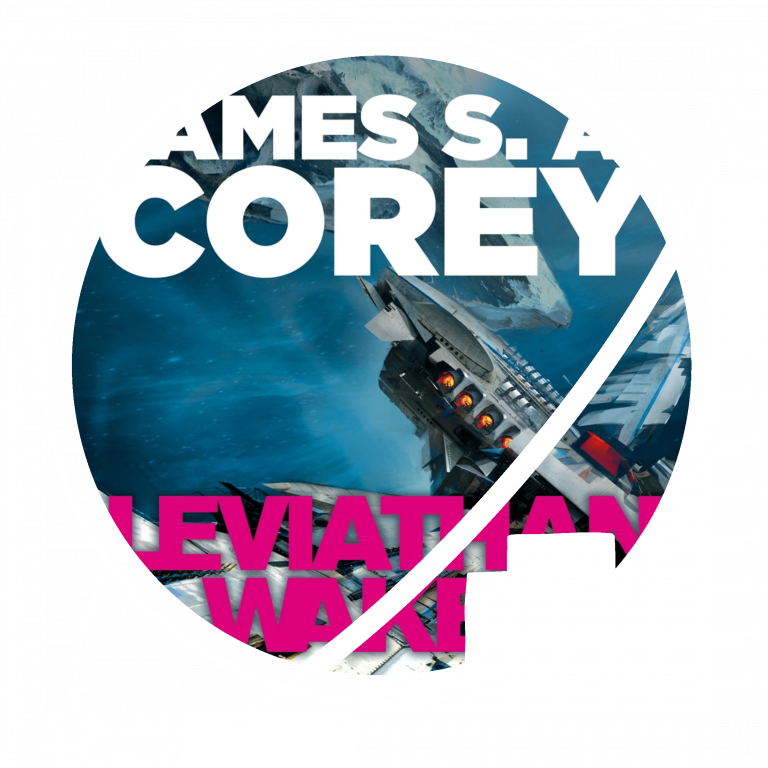

I have to admit that before I read Leviathan Wakes, I already watched some episodes of The Expanse (before I knew they were adapted from a book). So before I dove in, I was already familiar with some of the plot points. But it was sufficiently long ago that I wasn’t bothered, and there is enough of a difference between the two versions of the story that each is entertaining in their own right.
Leviathan Wakes is set in an interesting future that hovers between near-future stuff like Neuromancer or The Martian and distant future settings such as Altered Carbon or Foundation: humanity has colonised to the planets (Mars, the Kuyper Belt, some attempts at Venus) but not the stars. This creates a thought-provoking intersection between relatively hard, relatively believable sci-fi with real limitations on, for example, travel time and resources on the one hand, and space battles and spaceships that are more reminiscent of Star Wars than Apollo 13 on the other (though, come to think of it, who has ever seen an airlock in Star Wars?).
In addition, Corey takes some time to lay the groundwork for the political tensions between the different factions (which, I understand, will pay off in the next instalments), which nicely hints at a deeper layer without the need to actually delve into it in this book (the ‘raft’ the iceberg is floating on, so to speak; I’m sure we’ll get more ice under the waterline in future books!).
This original setting is the basis for an engaging plot, which is wrapped in high paced easy-flowing prose that kept me on the edge of my seat throughout the book. Though not quite as addictive as Andy Weir’s style, I found that Corey’s writing shares some traits, including relatively unshakeable characters with a can-do attitude that keep the plot moving, and wry jokes at the right juncture to put all the horrors of interplanetary war into perspective. Interestingly, the book also borrows (in plot and in tropes) from noir detective novels (and in that, actually shares a lot of similarities with Altered Carbon).
My nitpick with Leviathan Wakes is probably that while it straddles the divide between different sub-genres of sci-fi (and that is one of its main selling points), I felt the further it strayed from the relatively hard near-future stuff, the cornier it got. Now, for example, Star Wars is corny. But Star Wars (for all its flaws) embraces the corniness and gives us such a spectacle that sometimes it doesn’t matter that it’s not all that original or well-written. Leviathan Wakes, however, juxtaposes some of that more tropical and more handwavy sci-fi with the really well thought out relatively hard near-future sci-fi – which was unfortunately jarring at times. Once I’ve strapped in for G’s of thrust, Δv and spaceship heat signatures, don’t hit me with the ‘it just works, it’s way beyond our understanding’ type stuff.
Anyways, you probably have to be a hardcore ‘realism’ nerd like me for any of that to bother you. And please don’t let it scare you away from the book – it is very much worth the read for its original setting alone. I finished it in just over two weeks, which is probably the fastest I’ve finished a book this year. Definitely grabbing Caliban’s War off my father’s bookshelf the next chance I get!
Tagged:
See also:
- Movie directed by James Cameron
- Starring Sam Worthington, Zoe Saldana, Steven Lang, Michelle Rodriguez, and Sigourney Weaver,
- Released December 2009
- Runtime: 162 minutes
- Part one in the Avatar series
In this visual spectacle that launched the era of 3D in cinema’s, Jake Sully, a disabled marine, travels to the distant moon of Pandora to join a team of scientist attached to a corporate mining operation. He will replace his twin brother in the avatar-programme, whose members transfer their consciousness to human-alien hybrid clones to communicate with the local population. When he finds out that the humans care only for their bottom line and nothing for Pandora’s wildlife or native inhabitants, Jake is faced with a choice.

Full disclosure: I watched this movie once when it came out, and then maybe an hour last week.
I struggle to find the right way to write this review. Everything that could be said about Avatar has been said a thousand times over, so let me start by telling you this: Avatar is a fun film you’ll enjoy watching. Don’t expect it to blow your mind and you’ll be fine. Aside from the black-and-white plot, most of the problems this movie suffers from have to do with its age.
Avatar is basically a reskinned Pocahontas. In space. As a concept, I think that’s definitely fine – if a little contrived. It shows us a futuristic society in which humanity has learned absolutely nothing from its past and happily chooses to colonise other planets to harvest their resources. It feels a little bit unnuanced but let’s be honest: that’s exactly what humanity would do and you know it. You won’t be walking away from this movie with any kind of new perspective, but you’ll have enjoyed yourself. The characters aren’t particularly interesting but the acting is fine.
The CGI aged quite well, even though most of the movie looks like a video game, which is honestly pretty cool (just think how much more realistic video game graphics have become – kinda rad). As long as you remember how old the movie is and how impressive the CGI was for the time, you will likely be able to look past this. Even 13 years later, most of the graphics are beautiful and I’m sure would have looked lovely in IMAX 3D.
Why should you watch Avatar? Because it’s famous. No really, that’s it. If you were to ask me the most important reason to watch this film it’s just so you can be part of the cultural narrative. Or maybe because you want to be prepared for James Cameron’s 4 sequels to hit theatres.

I remember watching Avatar in the cinema back in 2009, and being blown away by the visual effects, and the 3D, and the visual design of the world and the human technology. Unfortunately, Avatar kicked off the era of unnecessary 3D in cinemas (since Avatar, I’ve found that it takes about two minutes for my mind to adjust, afterwards, I don’t even notice), and equally unfortunately, though it is still entertaining, the 2020s home screen experience is not the same as the 2009 cinema experience.
Avatar’s visual design is still stunning. The human mech suits, aircraft and base are a perfect mix of sci-fi and modern military, with great attention lavished onto little details like warning stickers or printed instructions. The real eye catcher, however, is the world, Pandora, and Pandora’s wildlife. Ranging from floating mountains and trees taller than skyscrapers to six-legged panthers and pterosaurs with butterfly wings, the art department poured their hearts out on the design of the world. Even though the CGI has started to age (especially in a couple of campfire-lit scenes), most of it still looks amazing – though it does look like watching a video game or animated feature more than a live action blockbuster at times. It doesn’t quite live up to the 2009 cinema magic, but it still works.
Unfortunately, because it works a bit less well than it did in 2009 in cinema, the viewer is less distracted by the visuals and pays just a little more attention to the story – or rather, the lack thereof. The story is basic – predictable – but functional. Avatar does nothing that you won’t expect it to do. It doesn’t miss any beats you’re expecting to see. At times though, the story is so functional that you can almost see the gears moving underneath the script as you’re watching.
Clearly, the story is not why you’re watching so Avatar deserves some leeway here. But even to someone like me, who can usually stomach a lot of action, the focus on the fighting and lengthy combat scenes can be a bit much. We watched Avatar because we were planning on seeing Avatar II: The Way of Water in cinema, and at some point just before the climax (or so we thought) we paused for a sanitary break and additional snacks – only to find out that there were still 45 more minutes of non-stop violence ahead (which ended up boring Robin to sleep – hence the absence of her review here).
Still, it’s not just the visual team that makes Avatar. The script itself may be basic, but some of the worldbuilding – the concepts – are actually pretty cool. The avatars themselves, creatures cloned from mixed human and alien DNA for humans to ‘drive’, are perhaps the most innovative, and the concept is used well in the plot. Another is the bioelectric communication between different creatures on Pandora, and the implications of the trees forming a neural network. On the other hand, some of the choices in worldbuilding are questionable – the anti-colonialist message of the story is well received, but the reliance on the ‘noble savage’ and ‘white saviour’ tropes are painful, as is the Earth-indigenous-coding of the Na’vi. This reliance on familiar plotlines and visual markers is, in my opinion, lazy. And why would you choose to design female aliens with breasts, only to then constantly contrive to cover them back up? Here, I think Avatar shows its true colours: there was probably a team with creative ideas, that was reeled in for mass market appeal.
So, know what you‘re in for: Avatar focusses on visuals and non-stop action. There is some neat worldbuilding, but the creative is submerged in a pool of the familiar. Story, characters, motivations – all as barebones as possible without breaking the immersion. It is testament to how incredibly good the visual design of this movie is that I’m still giving it three stars with that kind of summary.
Tagged:
- Book written by R.F. Kuang
- Published 23 August 2022
- Stand Alone
In a fictionalised version of the 1820s-1830s, Robin Swift is taken from his mother’s deathbed in his native Kanton (now mostly called Guangzhou) as a young boy. He is sent to Oxford in Britain to study translation: the art of producing magic from the difference in meaning between translated words in different languages. The more time he spends in Britain, the more he is torn by the contradiction between his love for Oxford’s translation institute Babel and the study of languages on the one hand, and his growing unease at Britain’s role in the world and Babel’s role in Britain. Almost as much as it is Robin’s story, Babel is a political statement on the exploitation of the Third World, both in the 1830s and now.
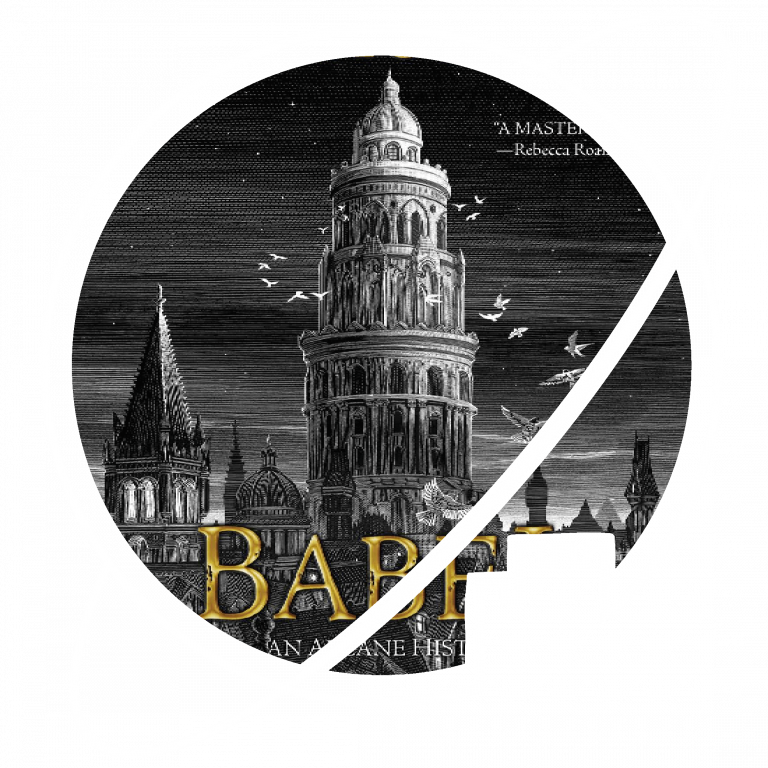

Listened to the audiobook with Chris Lew Kum Hoi and Billie Fulford Brown – great rendition, which allowed me to actually hear what the Chinese languages sound like.
There are two things which are particularly remarkable about Babel. The first is the magic system, and the second is its message.
Kuang came up with a very original, creative magic system based on the loss of meaning when a word is translated from one language to another. When both words are inscribed in a bar of silver and spoken aloud, the bar produces a spell similar to the meaning lost in translation. This means the book is littered with ‘match pairs’ of not-quite-translatable words, and constantly invites you to come up with combinations of your own. This amazing idea rightly came up in social media under our post on cool bits of worldbuilding and was the reason I decided to pick up this book. Unfortunately, while I absolutely loved the magic system in concept, I felt the execution was a bit lacklustre, in that the bars’ actual effects, while based in the lost meaning, felt quite random to me (and sometimes conveniently conformed to the plot’s demands). It is still a great idea and especially initially I was just as awed as Robin and his fellow students. But for how central the concept of translation is in the book (it is, after all, a book set in a magic school), I would have liked to see more effort spent on nailing it down a bit more. But I tend to like my magic systems either pretty hard boiled, or super soft – so take that into account.
Perhaps even more importantly, this book is remarkable because reading it feels like reading a pamphlet on anti-colonialism almost as much as it feels like reading a fantasy book. Many of the main characters, having been forced from their native countries to study in Britain and to put their language skills at the service of the British Empire, experience fierce racism at the hands of the social structure they are helping to maintain – and that is maintaining them. Kuang writes convincingly on how this experience shapes them, and on how the characters struggle with living life in (relative) luxury at the expense of an institution that they equally love and abhor.
The book’s full title is “Babel: Or the Necessity of Violence: An Arcane History of the Oxford Translators’ Revolution”. As one might imagine, therefore, the necessity of violence is a recurring theme in Babel. The central question the characters in this book are dealing with is not so much ‘is colonialism bad?’ (it clearly is), but rather, ‘what means are justified to fight an unjust system?’. While the ‘case study’ is colonialism, that moral/philosophical question is applicable more broadly. I will leave it up to you to answer that question for yourself, and interpret the book to find Kuang’s answer.
I have to admit that a fantasy book with such an overt political message took some adjusting from my side (as I’ve argued, politics tends to be the field of sci-fi). But I think Kuang dodges some of the more questionable aspects of fantasy as a medium for political expression by firmly grounding her work in reality: as an alternate history/historical fantasy, the book is set in a recognisable Victorian Britain. While clearly there are some differences due to silverworking, the social structures we are presented with are – on the whole – comparable to historical reality. I have to admit that it was actually rather refreshing to read a book which is so openly activist. I do not want to take anything away from more subtle treatment of 21st-social century themes (such as, for example, in the Murderbot Diaries or She Who Became the Sun) – but this book has a message and is very upfront about it.
So – what do I actually think of – you know – the story itself? It’s not bad, but I do think it is a bit overshadowed by the message. The plot didn’t always make complete sense (to me, at least), sometimes seemingly just trying to move to the end to raise the questions this book is really about. And some characters felt more like personified moral positions or political messages than people of flesh and blood. Having said that, I think Babel is very much worth reading, not only because of its refreshing message but also because of its worldbuilding. And I repeat: the story is not bad, just not as good as some other books out there. What is more, I think that activist fantasy in the vein of Babel should exist and should be read, if only to spark debate on the historical patterns of exploitation that are often recycled in fantasy stories with little or no criticism.

Babel is a very impressive book. Right from the start, it dives head first into themes of colonialism, racism and oppression. It confronts you with the horrors of colonialism and forces you to consider the consequences of looking away from suffering in order to maintain a comfortable lifestyle.
For me the strength of the whole book rests on an uncomfortable tension between despising the colonialist system and the people who keep it functioning, and recogising that I myself am making many of these same choices today in order to maintain my own comfortable lifestyle.
Despite these heavy subjects at the heart of the book, it is still a surprisingly enjoyable read. The characters are complex and interesting, and I finished the book quite quickly considering its length. My favourite part of the book is the focus on language and translation. The research that must have gone into this is considerable, and it provides even more food for thought to an already fascinating story.
Tagged:
See also:
© 2023 – Escape Velocity – A Curated Collection of Fantasy and Science Fiction Media
Privacy Overview
| Cookie | Duration | Description |
|---|---|---|
| cookielawinfo-checkbox-analytics | 11 months | This cookie is set by GDPR Cookie Consent plugin. The cookie is used to store the user consent for the cookies in the category "Analytics". |
| cookielawinfo-checkbox-functional | 11 months | The cookie is set by GDPR cookie consent to record the user consent for the cookies in the category "Functional". |
| cookielawinfo-checkbox-necessary | 11 months | This cookie is set by GDPR Cookie Consent plugin. The cookies is used to store the user consent for the cookies in the category "Necessary". |
| cookielawinfo-checkbox-others | 11 months | This cookie is set by GDPR Cookie Consent plugin. The cookie is used to store the user consent for the cookies in the category "Other. |
| cookielawinfo-checkbox-performance | 11 months | This cookie is set by GDPR Cookie Consent plugin. The cookie is used to store the user consent for the cookies in the category "Performance". |
| viewed_cookie_policy | 11 months | The cookie is set by the GDPR Cookie Consent plugin and is used to store whether or not user has consented to the use of cookies. It does not store any personal data. |








